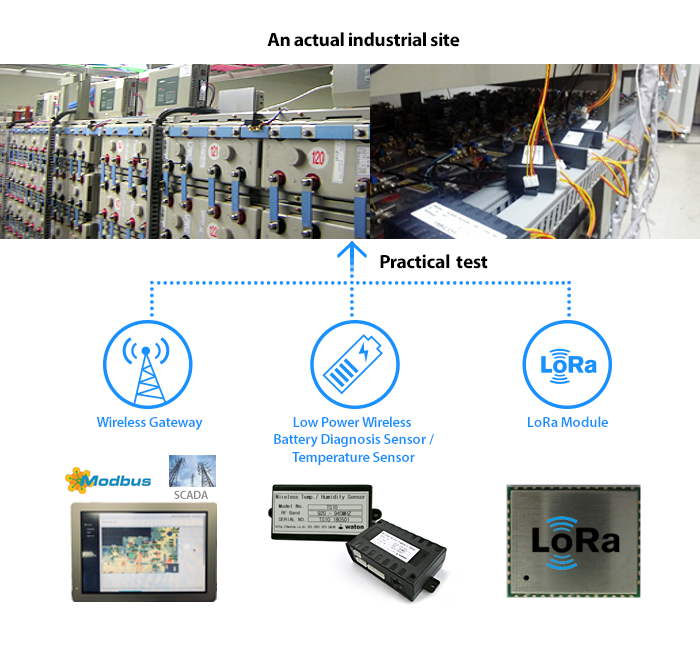Professor Sung-Kwan Jung’s research team developed a LoRa (Long Range) based low-power wireless monitoring system for industrial battery diagnosis as a research project of KAIST Institute for IT Convergence.
The battery system used in the rectifier or UPS (Uninterruptible Power System) generates a lot of heat. Accordingly, operators are demanding reduced power consumption of air-conditioning systems. To do this, operators need a real-time battery monitoring system.
Traditional wire based battery diagnosis systems are difficult to install and maintain, with very high costs. To solve this, the research team developed a battery diagnostic system using LoRa. LoRa is a large-scale low-power, long-distance wireless technology used in smart cities and outdoors on the basis of low standby power and low module prices. Many companies have been considering using it for industrial service.
The features of the developed system are as follows.
To apply IoT technology: When the type of sensing data increases, adding sensor interfaces to support individual sensor devices significantly increases system cost. Therefore, the research team is developing technologies that can eliminate additional interface cost using IoT element technology for various sensor devices.
Edge Platform technology: Industrial sensing data such as environmental information collection sensors have a relatively simple form of structured data. This information is meaningful only where the device is installed, and it is less efficient to send it to remote, high-performance (cloud) servers to analyze it. Therefore, the Edge platform, which enables rapid processing of structured sensor data where sensor devices are installed, is more competitive in price.
Web-based environment support: The administrator environment of an existing battery online diagnostic system is subject to specific computer environments. There is increased demand for platform independence in the administrator environment, along with the popularization of mobile devices. This requires platform-independent, Web-based administrator environment support. Web-based administrator environment support enables distributed functions such as data analysis and visualization, improves price competitiveness in terms of installation and maintenance, and provides scalability and flexibility that can be easily accommodated by various IoT devices.
Low power Wireless MAC Protocol: A well-designed wireless Mac protocol is required to collect real-time data from multiple sensor nodes in the field. The team developed MCR-TDMA (Multi-Channel Reservation Time Division Medium Access) MAC Protocol using the characteristics of LoRa PHY. This MAC can effectively collect data from the entire node in a short period of time, provided the number of nodes to be collected is fixed.
Finally, they developed industrial wireless gateways with the IoT Edge Platform, two types of low-power wireless sensors, and LoRa modules for low-power wireless communications. They are now testing the results on a real industrial site.
This research is related to IoT/WoT, which is one of the major research areas of KAIST Institute for IT Convergence (KIITC).

Sungkwan Jung (KAIST Institute for IT Convergence)
Homepage: http://itc.kaist.ac.kr
E-mail: skjung@itc.kaist.ac.kr






